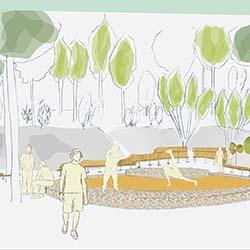
Remaking the Material Fabric of Greater Manchester
Are Northern industrial cities fit for purpose to meet contemporary challenges of sustainability? Answering this question has led practitioners and academics to focus on re-shaping or ‘retrofitting’ the physical fabric, the built environment and the infrastructure networks of city-regions.
In Greater Manchester there are a great many projects and initiatives that aim to refurbish or ‘retrofit’ the city-region’s buildings and the energy systems that supply them. Many of these are shaped in and by communities, yet what these responses look like and how communities are organised to achieve them is not well understood. A broader understanding of retrofitting as remaking the material fabric of Greater Manchester is needed. Who is involved? What kinds of experiments, examples and exemplars exist? Why? What are the resources and means they have? What difference do they make?
This project will generate an extended understanding of the ways in which the sustainable urban development agenda in Greater Manchester is being promoted through the ‘retrofitting’ of the built environment of the city-region and the infrastructure networks that run through it. The project will build an understanding of landscapes, contexts and conditions and identify historical and contemporary cases to feed into a city-regional database of sustainability initiatives. It will then build on this baseline assessment to develop coordinated actions and evaluate learning outcomes and transferable lessons.
Blog post: Why transforming the material fabric of cities matters
Decarbonising cities has become an increasingly important policy and research challenge. Debates usually focus on the role of cities as producers and reducers of CO2; city-level policy responses to decarbonisation; and the strengths and weaknesses of these responses. Mike Hodson and Alex Wharton summarise these issues and the role of policy, practice and research in enhancing city responses in Greater Manchester; and set out future work to enhance responses. Read the Blog post by Mike Hodson.







